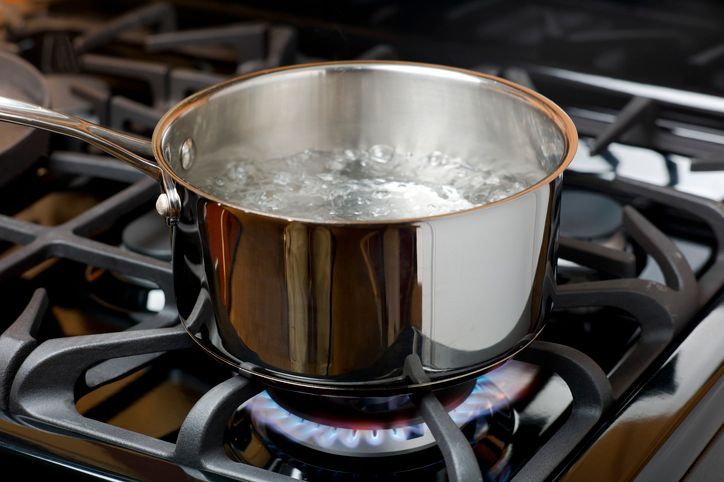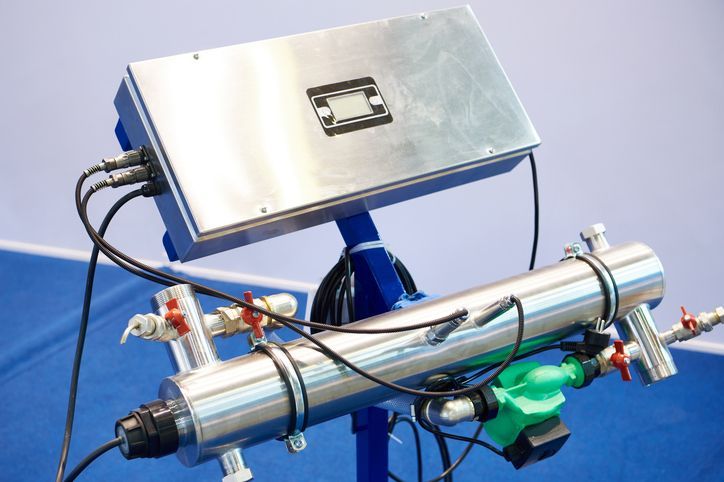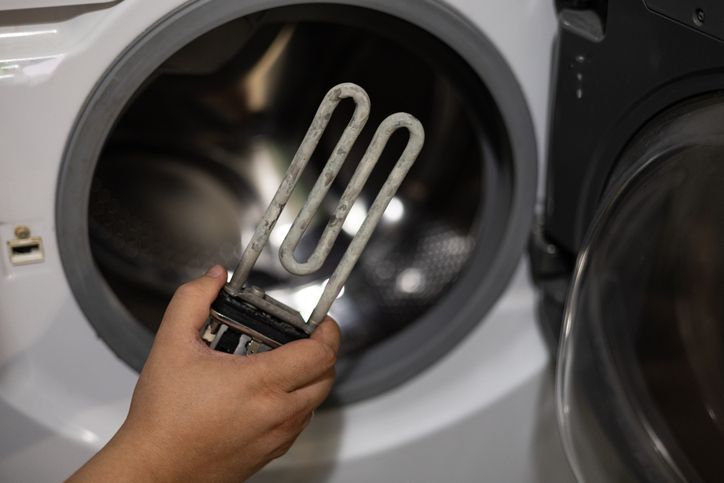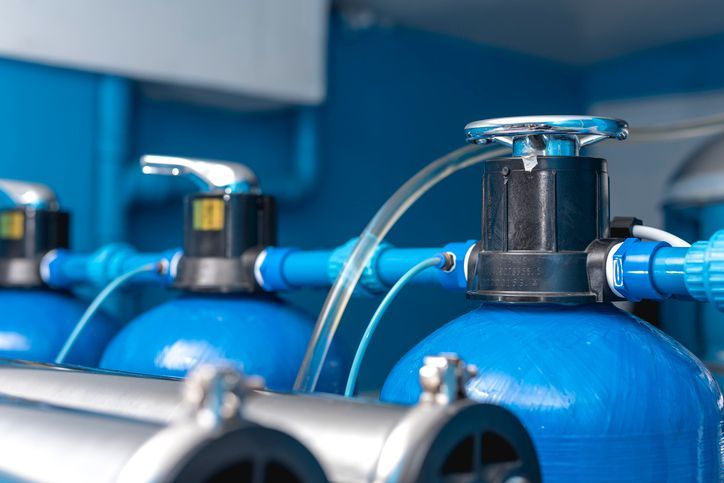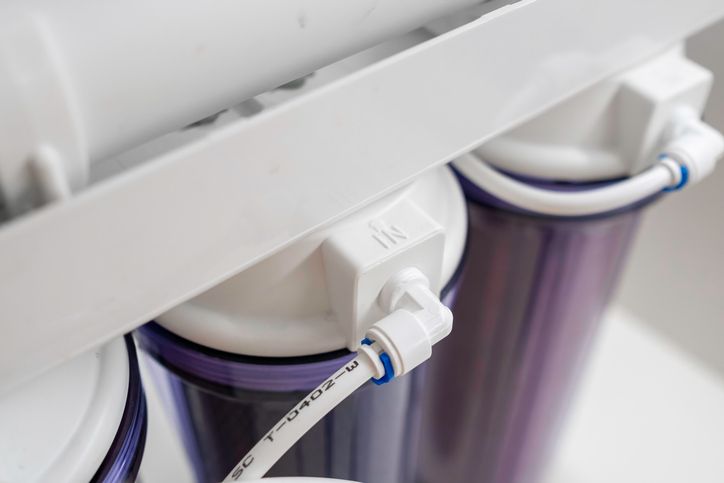How Water Filtration Provides Clean Water, Thriving Plants, and Healthy Homes
Why Water Quality Matters

Water is at the heart of a healthy home and a thriving garden. Yet, many homeowners overlook the quality of their water, assuming that what comes from the tap is always clean and safe. Water can contain various contaminants that affect both human health and plant vitality. From the water you drink to the water you use for cooking, cleaning, and gardening, ensuring its purity is essential for a well-balanced home environment.
Unfiltered water often carries unwanted substances, including chlorine, heavy metals, pesticides, and bacteria. These contaminants can cause skin irritation, digestive issues, and allergic reactions in people while also harming plants by disrupting their ability to absorb nutrients properly. Additionally, hard water—rich in minerals like calcium and magnesium—can lead to scale buildup in pipes and appliances, reducing their efficiency and lifespan.
Beyond personal health, poor water quality can negatively impact the greenery around your home. Plants are highly sensitive to certain chemicals and impurities in water, which can lead to slow growth, discoloration, and weakened roots. Garden enthusiasts who rely on municipal water may unknowingly introduce elements that stress their plants rather than nourish them.
Taking a holistic approach to water quality means considering every way water is used in daily life—from hydration and hygiene to plant care and appliance maintenance. Investing in a water filtration system or using natural purification methods can ensure that your entire household benefits from cleaner, safer water. By addressing water quality at every level, you create an environment where both your family and your garden can truly flourish.
The Science of Water Contaminants
Water is vital for human life and plant health, but not all water is created equal. Depending on its source, water can carry a variety of contaminants that affect household safety, plumbing efficiency, and plant vitality. These contaminants originate from municipal treatment processes, industrial runoff, agricultural practices, and even natural deposits in the environment.
Understanding these common pollutants and their impact can help homeowners take proactive steps to improve water quality.
Common Water Contaminants and Their Effects
1. Chlorine: Necessary but Problematic
Chlorine is widely used in municipal water systems to disinfect and kill bacteria and other harmful microorganisms. While it is essential for making water safe to drink, it can have negative effects when present in high concentrations.
For humans, chlorine exposure—whether through drinking, bathing, or even inhaling steam from showers—can lead to skin irritation, dryness, and respiratory discomfort. It also removes natural oils from the hair and skin, leaving them dry and brittle.
For plants, chlorine disrupts the natural ecosystem of soil by killing beneficial microbes that help with root development and nutrient absorption. These microorganisms play a critical role in helping break down organic matter and making nutrients bioavailable to plants. Without them, plant growth may slow, and the overall soil structure can degrade.
A high-quality filtration system can help remove excess chlorine, ensuring safer water for both household use and gardening.
2. Heavy Metals: Silent but Dangerous
Heavy metals like lead, mercury, and arsenic are some of the most dangerous water contaminants. These substances often enter the water supply through corroded pipes, industrial pollution, or natural mineral deposits in the ground.
Lead: Exposure to lead can lead to serious health problems, particularly in children, including developmental delays, neurological damage, and kidney dysfunction. Lead contamination often originates from old plumbing systems where lead pipes or solder were used.
Mercury: This toxic metal can accumulate in the body over time, affecting the nervous system and causing cognitive and motor function impairments.
Arsenic: Naturally occurring in some groundwater sources, arsenic has been linked to various health risks, including cancer and cardiovascular diseases.
Heavy metals in irrigation water can be equally destructive for plants. They accumulate in the soil and interfere with nutrient uptake, leading to stunted growth, leaf discoloration, and even plant toxicity. In severe cases, crops irrigated with contaminated water can pass heavy metals to humans through consumption.
Installing a water filtration system capable of removing heavy metals, such as a reverse osmosis system or activated carbon filter, is an effective way to safeguard both human health and plant well-being.
3. Sediments and Minerals: The Hidden Blockages
Sediments, such as sand, dirt, and rust particles, enter water through aging pipes, natural erosion, and runoff from construction or industrial sites. While these particles are not always harmful to human health, they can cause significant plumbing issues, including clogged pipes and reduced water pressure.
Hard water—rich in minerals like calcium and magnesium—can also lead to limescale buildup in appliances such as dishwashers, washing machines, and water heaters. Over time, this reduces their efficiency and shortens their lifespan, leading to expensive repairs and replacements.
Excess minerals in water can alter soil pH, making it more alkaline. This shift in pH can prevent plants from absorbing key nutrients like nitrogen, phosphorus, and potassium, which are essential for healthy growth. Certain plants, like azaleas or blueberries, thrive in slightly acidic soil, and hard water can negatively impact their ability to flourish.
Using a sediment filter or water softener can help address these issues, ensuring that both household water systems and gardens remain in optimal condition.
4. Pesticides and Herbicides: The Agricultural Threat
Pesticides and herbicides used in farming and landscaping can leach into groundwater or be carried into rivers and lakes through runoff. Even municipal water treatment plants cannot always remove these chemical residues altogether, meaning they can end up in tap water.
Exposure to certain pesticides has been linked to hormone disruption, nervous system damage, and an increased risk of certain cancers in humans.
These chemicals can cause long-term damage to plants by affecting root health and microbial diversity in the soil. When absorbed by plants, pesticides and herbicides can also reduce beneficial insect populations, further disrupting the balance of a healthy garden ecosystem.
A high-quality carbon filter or specialized filtration system designed to remove chemical contaminants can help mitigate the risks associated with pesticide exposure.
5. Microorganisms and Bacteria: Unseen but Harmful
Although municipal water treatment systems are designed to remove bacteria and other pathogens, contamination can still occur due to aging infrastructure, flooding, or well water contamination. Common waterborne pathogens include:
- E. coli: A bacterium that can cause severe gastrointestinal issues and foodborne illness.
- Giardia: A parasite that leads to digestive problems, such as diarrhea and dehydration.
- Legionella: The bacterium responsible for Legionnaires’ disease, a severe lung infection.
For plants, bacteria-laden water can lead to root rot, mold, and fungal infections that weaken plant health. Some microorganisms can also disrupt the delicate balance of nutrients in the soil, leading to diminished crop yields and unhealthy foliage.
Boiling water, UV sterilization, and advanced filtration methods like reverse osmosis can help eliminate harmful microorganisms, ensuring safe water for both human consumption and plant irrigation.
Impact of Poor Water Quality on Indoor Plants and Gardens
Have you noticed stunted growth, yellowing leaves, or a lack of flowering in your plants despite careful care? The culprit might be your water. Many gardeners focus on factors like sunlight, soil composition, and fertilizer but overlook water quality, which plays an essential role in plant health. Contaminants in unfiltered water can disrupt nutrient absorption, weaken root systems, and degrade soil over time.
How Contaminated Water Affects Plant Health
Water is a primary medium through which plants receive nutrients. However, when it contains impurities such as chlorine, heavy metals, and excess minerals, plants may struggle to absorb the nutrients they need to thrive. Contaminated water can cause:
Restricted root development – Heavy metals and excess minerals accumulate in the soil, making it difficult for roots to expand and take up nutrients. This results in weak plants that are more susceptible to stress.
Reduced resistance to pests and diseases – Plants weakened by poor water quality become more vulnerable to insect infestations and fungal infections. Healthy plants have natural defense mechanisms, but when they are stressed, their ability to fend off pathogens diminishes.
Poor soil structure and loss of fertility — Over time, contaminants like chlorine and hard water minerals can kill beneficial soil microbes, leading to compacted soil that does not effectively retain moisture or nutrients.
Indoor plants are especially susceptible to these issues because they rely solely on household water, which often contains high levels of chlorine and other chemicals. Unlike outdoor plants, which benefit from natural rainfall that helps flush out excess minerals and chemicals, houseplants can experience a gradual buildup of harmful substances in their pots.
The Effects of Specific Water Contaminants on Plants
1. Chlorine: A Common but Harmful Additive
Municipal water is typically treated with chlorine to eliminate bacteria and pathogens. While this makes it safe for human consumption, it can have unintended consequences for plants. Chlorine disrupts the delicate microbial balance in the soil, killing off beneficial bacteria that help break down organic matter and make important nutrients available to plants. Some sensitive plants, such as ferns, orchids, and certain tropical species, exhibit leaf burn or browning edges when exposed to high chlorine levels. Over time, chlorine can weaken plants and stunt growth, particularly in potted indoor plants where water does not drain as freely.
Solution: Letting tap water sit uncovered for 24 hours before watering allows chlorine to evaporate. However, for those watering large gardens or extensive plant collections, a water filtration system that removes chlorine is a more efficient solution.
2. Heavy Metals: Toxic Accumulation in Soil
Lead, mercury, arsenic, and copper can enter water supplies through old pipes, industrial runoff, or natural deposits. These metals are toxic to both humans and plants. Heavy metals accumulate in soil, making it difficult for plant roots to take up essential nutrients. Symptoms of heavy metal toxicity in your plants include yellowing leaves, weak stems, and slow growth. Plants exposed to high levels of lead can suffer from root deformities, which can lead to poor nutrient absorption and an overall decline in health.
Solution: Using a reverse osmosis or activated carbon filtration system helps remove heavy metals from water before they reach your plants.
3. Excess Minerals and Hard Water Issues
Hard water, which contains high levels of magnesium and calcium, is common in many households. While these minerals are beneficial in small amounts, excessive accumulation can be detrimental. Hard water leads to salt buildup in the soil, which prevents plants from absorbing moisture effectively. This can cause wilting, browning leaf tips, and stunted growth. Over time, mineral deposits can form a crust on the surface of potted plants, reducing water penetration and aeration. Some plants, such as cacti, can tolerate hard water better than others, but long-term exposure can still impact their health.
Solution: Installing a water softening system or collecting rainwater for irrigation can help mitigate hard water issues.
4. Sodium and Chemical Salts: Dehydration Risks
Tap water often contains added sodium, which can negatively impact plant health. Sodium in high concentrations interferes with the osmotic balance of plant cells, making it harder for plants to absorb water. Symptoms of sodium toxicity include leaf curling, scorched leaf edges, and reduced photosynthesis efficiency. In soil, sodium can alter structure by causing compaction, reducing drainage, and limiting oxygen availability to roots.
Solution: Using a water filtration system designed to remove sodium or diluting tap water with collected rainwater can help protect plants.
How Outdoor Gardens Are Affected
While outdoor plants have greater access to natural water sources such as rain, they are not immune to water quality issues. Over time, repeated use of contaminated tap water can affect soil health and plant productivity.
Soil Degradation: Excess minerals and salts build up in garden beds, leading to poor drainage and compacted soil.
Decreased Crop Yields: Vegetable gardens exposed to contaminated water may experience lower fruit and vegetable production as plants struggle to take in the necessary nutrients.
Weaker Root Systems: Poor water quality can result in weak, shallow roots, making plants more susceptible to drought and extreme weather conditions.
Choosing the Best Water for Your Plants
Investing in a water filtration system ensures that your plants receive clean, chemical-free hydration, supporting strong root growth and vibrant foliage. There are several ways to improve water quality for gardening:
- Filtered Water: A high-quality filtration system removes harmful chemicals, heavy metals, and excess minerals.
- Rainwater Collection: Harvesting rainwater provides plants with naturally soft, chemical-free water that encourages healthy growth.
- Distilled Water: Distilled water eliminates most contaminants for particularly sensitive plants but lacks essential minerals, so it may need supplementation with natural fertilizers.
- Aeration & Settling: Allowing tap water to sit for a day helps chlorine evaporate, reducing its impact on plants.
The Long-Term Benefits of Clean Water for Plants
Using high-quality water for irrigation has numerous long-term benefits:
- Improved Soil Structure: Healthy, microbe-rich soil leads to better plant growth and resilience.
- Higher Yield for Fruits and Vegetables: Crops grown with clean water produce more abundant, nutrient-rich harvests.
- Stronger, More Vibrant Plants: Houseplants and garden plants grow faster, greener, and more resistant to disease.
By ensuring that your indoor plants and gardens receive clean, filtered water, you can create an optimal growing environment that supports plant health year-round. Clean water is not just beneficial for human consumption—it is essential for nurturing thriving, beautiful plants that will enhance your home and outdoor space for years to come.
Understanding Waterborne Allergens and Their Health Implications
Waterborne allergens present an often-overlooked challenge, especially for individuals with allergies, asthma, or sensitive skin. These microscopic irritants are not only found in drinking water but can also become airborne through activities such as showering, dishwashing, and humidifier use. As a result, they can contribute to a range of health issues, including skin irritation and immune system overreactions.
Common Waterborne Allergens and Their Effects
Several contaminants in tap water can trigger allergic reactions and other health concerns. These include:
1. Mold Spores
Mold is a persistent allergen that thrives in damp environments, including plumbing systems, water pipes, and storage tanks. Some key concerns with mold spores in water include:
- Respiratory Issues: Inhalation of mold spores can lead to congestion, wheezing, and exacerbated asthma symptoms.
- Skin Irritation: Mold in water can cause itching, redness, and flare-ups for individuals with eczema or other skin sensitivities.
- Gastrointestinal Problems: Drinking mold-contaminated water can sometimes lead to digestive upset or allergic reactions.
Mold spores often spread through humid environments, meaning that a hot shower or running tap water can release them into the air, making them even more problematic for allergy sufferers.
2. Bacteria and Microbes
Waterborne bacteria and microbes are not only a source of illness but can also act as allergens, triggering immune responses. Some of the most concerning include:
- Legionella: This bacterium can cause Legionnaires’ disease, a severe form of pneumonia, which is particularly dangerous for those with weakened immune systems.
- Pseudomonas aeruginosa: This bacteria is common in water systems and can cause skin infections, respiratory problems, and ear infections.
- E. coli and Other Pathogens: While primarily known for causing foodborne illnesses, these bacteria can also aggravate allergies and cause inflammation in the body.
People with respiratory conditions, such as asthma or chronic bronchitis, may experience worsened symptoms when exposed to bacteria-laden steam from showers or dishwashing.
3. Chemical Byproducts from Municipal Water Treatment
Municipal water treatment plants use chemicals like chlorine and chloramine to disinfect water, but these substances can create harmful byproducts:
- Trihalomethanes (THMs): These are formed when chlorine reacts with organic matter in water. Long-term exposure to THMs has been linked to respiratory irritation and potential cancer risks.
- Volatile Organic Compounds (VOCs): VOCs are another class of chemicals found in treated water that can become airborne and cause headaches, dizziness, and allergic reactions.
- Chlorine and Chloramine: While they help disinfect water, they can irritate the eyes, skin, and respiratory system, triggering asthma attacks and worsening eczema.
When these chemicals are released into the air through steam, they can exacerbate allergic reactions and worsen indoor air quality.
4. Hard Water Minerals and Their Role in Allergies
Hard water contains higher levels of calcium, magnesium, and other dissolved minerals. While these are not allergens in themselves, they can worsen existing conditions such as:
- Eczema and Psoriasis: Hard water strips natural oils from the skin, leaving it irritated and dry. This can cause eczema flare-ups, itching, and discomfort.
- Hair and Scalp Irritation: Hard water can leave mineral deposits on the scalp, causing dryness, dandruff, and irritation for those with sensitive skin.
- Reduced Soap Efficiency: Hard water makes it difficult to rinse off your soap and shampoo thoroughly, leaving behind a residue that may aggravate skin conditions.
For allergy sufferers, even mild irritation caused by hard water can lead to increased inflammation and sensitivity.
How Waterborne Allergens Become Airborne
One of the biggest challenges with waterborne allergens is that they don’t remain confined to the water supply. Everyday activities like showering, boiling water, and using dishwashers release tiny particles into the air, which can be inhaled.
- Shower Steam: A hot shower can release chlorine, mold spores, and bacteria into the air, leading to respiratory irritation.
- Dishwashing: The combination of heat and running water aerosolizes waterborne chemicals and allergens.
- Humidifiers: If filled with unfiltered tap water, humidifiers can disperse bacteria, mold spores, and minerals into the air, worsening allergies.
Because of this, improving water quality can have a direct impact on indoor air quality, reducing allergic reactions in sensitive individuals.
The Role of Water Filtration in Reducing Allergic Reactions
Installing a whole-home water filtration system is one of the most effective ways to eliminate waterborne allergens and improve both water and air quality. A high-quality filtration system can:
Remove chlorine and chemical byproducts that trigger respiratory issues.
Filter out bacteria and mold spores to reduce exposure to airborne allergens.Soften hard water, preventing skin irritation and improving hydration.
Reduce volatile organic compounds (VOCs) that can worsen indoor air quality.
Whole-home filtration ensures that all the water used in the house—whether for drinking, cooking, bathing, or cleaning—is free from allergens and irritants.
Additional Steps for Allergy Sufferers
For individuals prone to allergies, combining a filtration system with a few additional precautions can lead to even better results:
Use Filtered Water for Cooking and Drinking – Even small amounts of contaminants in water can contribute to inflammation, so ensuring that all household water is filtered can help reduce allergic reactions.
- Install a Shower Filter – If a whole-home system isn’t an option, a showerhead filter can help reduce chlorine exposure and airborne contaminants.
- Opt for a Water Softener – A water softening system removes excess minerals that contribute to dry, irritated skin.
- Regularly Clean and Maintain Water Fixtures – Mold and bacteria can build up in pipes, showerheads, and humidifiers. Regular cleaning and maintenance help prevent contamination.
- Consider a HEPA Air Purifier – Since waterborne allergens can become airborne, an air purifier can further reduce exposure in the home.
The Bigger Picture: A Healthier Home Environment
For allergy sufferers, improving water quality is a simple but powerful way to enhance overall well-being. By investing in a strategic filtration approach, homeowners can:
- Minimize respiratory irritants that contribute to asthma and congestion.
- Improve skin hydration and health by eliminating chlorine and hard water minerals.
- Reduce airborne allergens, creating a cleaner, healthier indoor space.
A proactive approach to water filtration does more than improve water taste—it directly impacts health by eliminating potential allergens and irritants. Whether through a whole-home system, under-sink filters, or specialized shower filters, making the switch to cleaner water can lead to better breathing, healthier skin, and fewer allergy-related symptoms.
The Dual Benefits of Whole-Home Water Filtration Systems
Whole-home water filtration systems provide an all-encompassing solution by eliminating contaminants before they enter your plumbing system. The benefits extend beyond just clean drinking water:
- For Plants: Better soil health, increased nutrient absorption, and stronger plant growth.
- For Families: Safer, better-tasting water with fewer allergens, leading to healthier skin and hair.
- For Home Maintenance: Reduction in scale buildup in appliances, extending their lifespan and improving efficiency.
- For Sustainability: A reduction in bottled water use, lowering plastic waste, and supporting environmental conservation.
Modern filtration systems—such as reverse osmosis and carbon-based filters—remove harmful substances at the source. This means every tap in your home delivers purified water, providing consistency in quality and taste.
Beyond health benefits, whole-home filtration can lead to substantial cost savings. Homeowners can reduce their bottled water, minimize plumbing repairs due to scale buildup, and lower medical costs linked to skin and respiratory conditions.
Additionally, investing in filtration supports sustainability by reducing plastic waste and conserving water resources. A clean water system benefits both personal well-being and the environment, making it a wise long-term investment for any household.
Practical Tips for Maintaining Optimal Water Quality at Home
Regular maintenance is essential to get the most out of a home filtration system. Homeowners should:
- Replace filters on schedule to ensure optimal performance.
- Test water quality regularly to detect any emerging contaminants.
- Use filtered water for gardening to boost plant health and soil quality.
- For gardeners, rainwater collection systems—when paired with filtration—offer an additional eco-friendly solution. Filtering collected rainwater before use eliminates potential pollutants, providing an extra layer of protection for sensitive plants. A hot shower can release chlorine, mold spores, and bacteria into the air, leading to respiratory irritation.
- Dishwashing: The combination of heat and running water aerosolizes waterborne chemicals and allergens.
- Humidifiers: If filled with unfiltered tap water, humidifiers can disperse bacteria, mold spores, and minerals into the air, worsening allergies.
Because of this, improving water quality can have a direct impact on indoor air quality, reducing allergic reactions in sensitive individuals.
Experience Cleaner Water With Aqua Solutions
A whole-home water filtration system isn’t just an investment in cleaner water—it’s a commitment to a healthier home and a thriving garden. By ensuring that your water is free of harmful contaminants, you can:
- Improve plant health and soil fertility.
- Reduce exposure to allergens and toxins.
- Enhance the efficiency of home appliances.
- Support a more sustainable, eco-friendly lifestyle.
At Aqua Solutions, we’re dedicated to helping Pittsburgh-area homeowners achieve the highest water quality possible. As a locally owned business, we pride ourselves on exceptional customer service and expert solutions tailored to your needs.
Ready to experience the benefits of cleaner water? Schedule a consultation with Aqua Solutions today and take the first step toward a healthier, more sustainable home!

Author:
Gary Monks
Gary Monks has led Aqua Solutions since 1997, earning recognition as a water treatment expert with 25 years of experience. Renowned in Butler, he has won the Best Water Treatment award for three years and actively supports the community, including local sports and radio engagements.
